Quizzing Standards in E-learning That You Must Follow!

Assessment is an integral part of any eLearning course; it determines the capability of the learner and helps find out of if the instructional objectives are achieved. However, most of the time we tend to take this aspect for granted. There is so much more to a quiz rather than just a question and a few answers.
While creating quiz questions in your eLearning course, there are certain sets of standards you need to follow to create an impactful assessment in your eLearning course.
Let me take you through the 3 most crucial ‘must know’ of quiz making.
Question:
This is the most important aspect of your quiz; well, there cannot be a quiz without a question. Your question must consist of a theme you want your leaner to be assessed on. For instance, let us suppose that the cities of Australia is the theme; so now your question will be something like this: Which city is the capital of Australia? It’s an untold rule that your question must have the right answer and wrong distracters to aid in further learning. Below is an example of how a question stem, the answer and distracters should be.
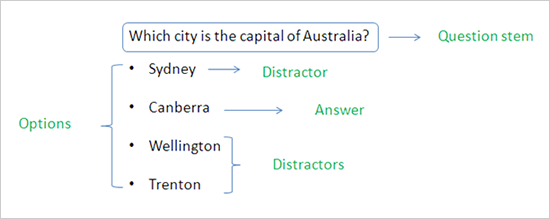
Once you have set your question, the next comes its feedback.
Feedback:
This is the second most important aspect of a quiz. Feedback in eLearning must be immediate and aim at reinforcing preexisting knowledge. Ideally feedback must be given for both the right and the wrong answers. When your learner is right you can tell him/her that he is right and state the reason of why he/she is right. The same applies when your learner is wrong, you can state the reason of why he/she was wrong and end the feedback with telling your learner what is the right answer. This will not only bring clarity to your quiz, but also gives your learner a chance to know where he/she has gone wrong. Providing feedback for the wrong answer is essential because you don’t want your learner to be lost or confused while taking the quiz; this particular feedback in certain cases can be an eye opener for your learner. Below is an example of how you can use feedback that is effective in reinforcing knowledge.
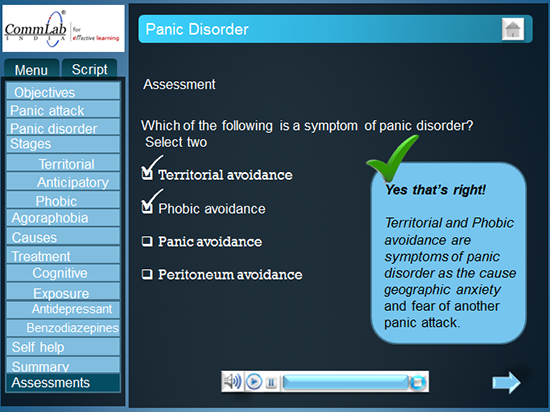
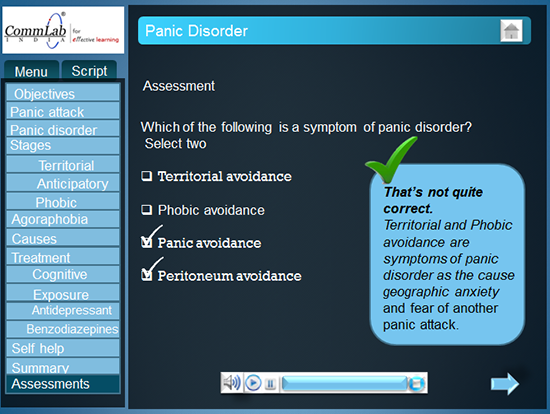
Indicate credit:
The first thing you learner needs to know even before he/she starts taking the quiz is the criteria of credit, or in other words the pass percentage. This will help the learner know what is required from him/her in order to complete the course in the very first attempt. For instance, as an instructional designer you forget to mention the criteria of the assessment, and your learner ends up failing the course. Letting your learner know what is required of him/her to gain credit, can go a long way in enhancing your learner’s performance.
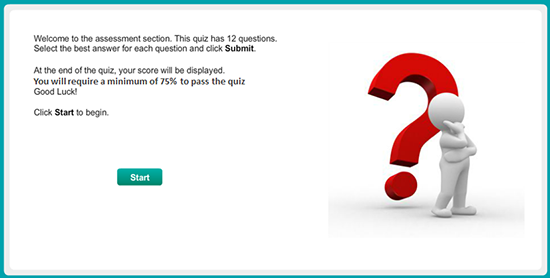
Number of questions:
Just as we have slide numbers that notify the learner about the status of the course, in the same way adding the total number of questions in your quiz will give your learner a better understanding of how many questions he/she has to answer. This will help your learner gauge the answers better as he/she will know what is required from him/her in order to pass the quiz and complete the course.
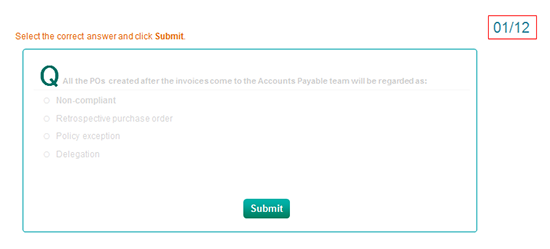
In my opinion, these are the basic standards an instructional designer needs to follow when creating a quiz for an eLearning course. Do let us know if you have an interesting note to add.




![6 Steps for Flawless eLearning Assessments [Infographic]](https://blog.commlabindia.com/hubfs/Imported_Blog_Media/eLearning-Assessments-6-Best-Practices-to-Follow.png)
![4 Latest Trends that Impact and Influence Instructional Designers [Infographic]](https://blog.commlabindia.com/hubfs/Imported_Blog_Media/instructional-design-trends-infographic1.jpg)